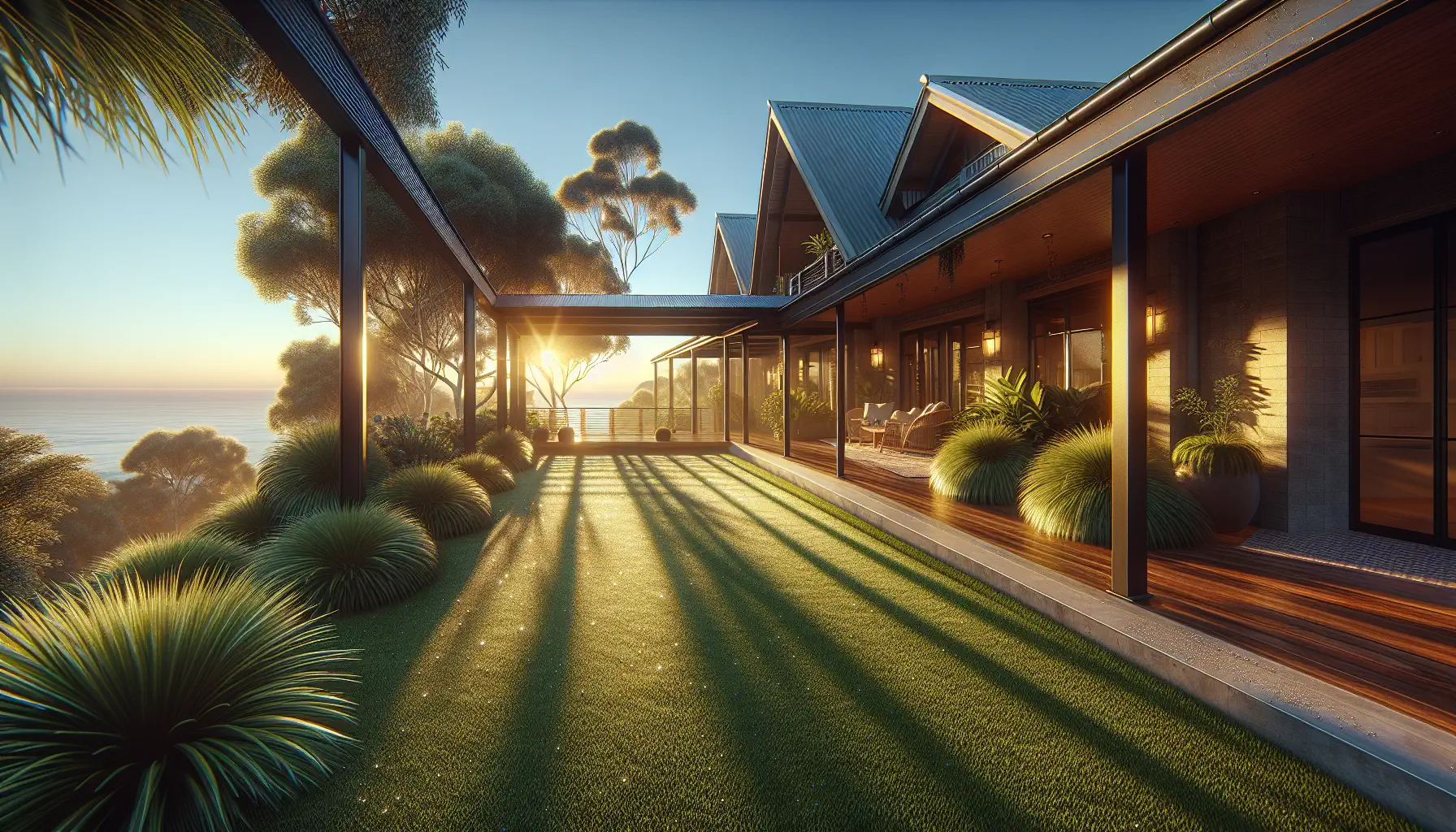Is Artificial Turf Worth It For Your Home
Artificial turf has gained popularity among homeowners seeking a low-maintenance and cost-effective alternative to traditional grass lawns. Its eco-friendly attributes make synthetic turf a beneficial choice for enhancing outdoor spaces.
Compared to natural grass, fake grass requires minimal upkeep and offers significant long-term savings.
Factors like climate, usage, and durability should be considered before committing to turf installation.
Real-life case studies and testimonials can offer valuable insights into the advantages and disadvantages of switching to artificial grass.
Click here to learn more about: syntheticturfgoldcoast.net.au
Benefits of Artificial Turf
Artificial turf provides a convenient solution for those seeking a beautiful, low-maintenance alternative to natural grass. Aesthetics are a key consideration when choosing artificial turf for your landscaping needs.
With proper drainage systems in place, artificial turf can offer a safe and eco-friendly option for homes and sports fields alike.
Its durability and pet-friendly features make it a popular choice for backyard landscaping.
Artificial turf truly stands out for its numerous benefits and advantages.

Cost Comparison with Natural Grass
Exploring the financial implications of choosing between natural grass and artificial turf can provide valuable insights. Playgrounds and schools, along with commercial use areas, can also benefit from understanding the cost comparison between these two options.
Initial Installation Costs
One of the key factors to consider when comparing natural grass and artificial turf is the upfront installation costs.
While natural grass may seem cheaper initially, artificial turf offers long-term savings in terms of maintenance and water bills.
Maintenance Costs Over Time
Artificial turf requires minimal maintenance compared to natural grass, which needs regular mowing, watering, and fertilizing.
For residential use and golf courses, artificial turf can present a cost-effective alternative.
Natural Grass vs.
Artificial Turf
- Natural grass may seem cheaper initially, but artificial turf offers long-term savings in terms of maintenance and water bills.
- Artificial turf requires minimal maintenance compared to natural grass, which needs regular mowing, watering, and fertilizing.
- For residential use and golf courses, artificial turf can present a cost-effective alternative.
Maintenance Tips for Synthetic Turf
Synthetic turf offers a convenient and low-maintenance solution for high-traffic areas like sports fields and dog parks. The key to keeping your turf looking fresh and vibrant lies in regular cleaning and maintenance.
Debris and stains should be promptly removed to prevent damage, while regular brushing and fluffing can help prevent matting and preserve the appearance of your turf.
For dog runs, preventing and treating pet urine is essential to avoid odors and maintain the turf’s integrity.
Checking for wear and tear early on allows for prompt repairs, extending the lifespan of your synthetic turf.
Whether you have putting greens or shaded areas, following these maintenance tips is crucial for preserving the longevity and performance of your turf.
Environmental Impact of Fake Grass
Artificial grass, also known as fake grass or synthetic turf, is a popular landscaping option for those seeking year-round greenery without the hassle of maintaining natural grass. While it offers benefits such as easy maintenance and cost savings, it is crucial to consider the environmental impact of using fake grass.
One of the main concerns with artificial grass is its lack of eco-friendliness compared to natural grass.
It does not contribute to biodiversity and can have negative effects on local ecosystems.
The production and disposal of fake grass can have long-term consequences on the environment, including water savings and an eco-friendly lifestyle. Despite its aesthetic appeal and time savings, it is essential to weigh the potential drawbacks of installing fake grass in residential or commercial spaces.
For allergy sufferers and those looking to create an eco-friendly landscaping design, there are options available that are more sustainable and environmentally friendly.
| Artificial Grass | Natural Grass |
|---|---|
| Easy maintenance | Requires regular upkeep |
| Cost savings | May require more initial investment |
| Lack of eco-friendliness | Contributes to biodiversity and local ecosystems |
| Long-term environmental consequences | Minimal impact on the environment |
What Should You Not Put on Artificial Grass Avoid These Items to Maintain Your Lawns Quality
Is Turf Cheaper Than Artificial Grass The Real Cost Comparison
